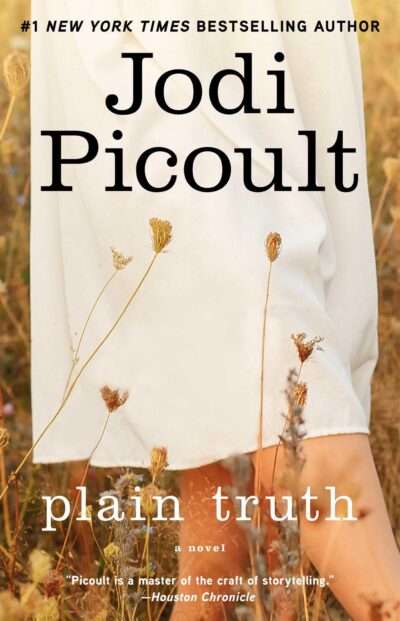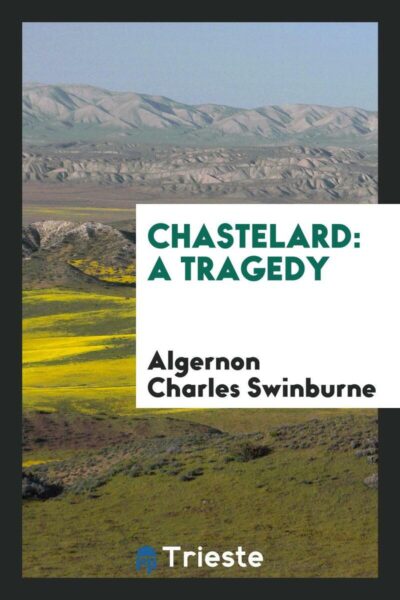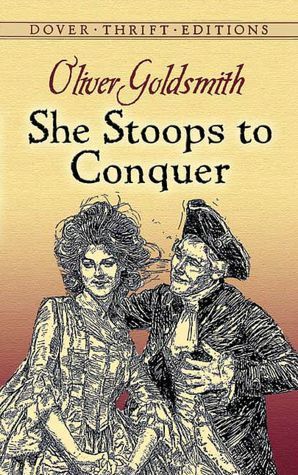123 Results with the "Drama" genre
Adventure Fiction (1164)
Biography (435)
Business & Finance (1)
Children's Literature (124)
Comics (6)
Culture (51)
Dystopian (29)
Fable (86)
Fantasy (1132)
Fantasy (203)
Fiction (1010)
Finance (1)
Gothic Fiction (12)
Historical Fiction (615)
History (122)
Horror (56)
Lifestyle (36)
Literary (404)
Literary Fiction (207)
Memoir (113)
Mystery (422)
Non-fiction (87)
Novel (549)
Paranormal Fiction (96)
Philosophical (182)
Philosophy (45)
Poetry (249)
Political Fiction (14)
Politics (42)
Practical (32)
Psychological (4)
Psychological Thriller (108)
Relationship (6)
Romance Novel (716)
Romantic Melodrama (14)
Satire (91)
Science (46)
Science Fiction (345)
Self-help (68)
Society (65)
Society (2)
Spiritual Growth (1)
story (2)
Thriller (704)
True Crime (56)
view (11)
Women's Fiction (2)
Young Adult (233)
-
Chapter
ACT I — Ivanoff
 ACT I - Ivanoff begins beneath the slow-burning light of evening, where silence stretches over the estate like a veil, broken only by the voices of those tangled in their own unspoken battles. Ivanoff, once spirited and impassioned, now finds himself hollowed out by a restlessness he cannot name. His disconnection from Anna, once deeply loved, reveals itself not through cruelty but through absence—he avoids her presence as if proximity exposes the guilt he no longer wants to confront. Anna, weakened by…
ACT I - Ivanoff begins beneath the slow-burning light of evening, where silence stretches over the estate like a veil, broken only by the voices of those tangled in their own unspoken battles. Ivanoff, once spirited and impassioned, now finds himself hollowed out by a restlessness he cannot name. His disconnection from Anna, once deeply loved, reveals itself not through cruelty but through absence—he avoids her presence as if proximity exposes the guilt he no longer wants to confront. Anna, weakened by…-
14.6 K • Ongoing
-
-
Chapter
THURSDAY JULIA
 The chapter opens with Julia encountering Brian Fitzgerald, whose car is filled with astronomical charts and star maps, revealing his passion for astronomy. Their conversation shifts to childhood memories of stars, blending whimsical and scientific perspectives—Julia recalls her mother's angelic explanation for starlight, while Brian humorously contrasts this with his attempts to teach his kids about atomic fusion. Their exchange highlights the interplay between wonder and logic, culminating in Brian's…
The chapter opens with Julia encountering Brian Fitzgerald, whose car is filled with astronomical charts and star maps, revealing his passion for astronomy. Their conversation shifts to childhood memories of stars, blending whimsical and scientific perspectives—Julia recalls her mother's angelic explanation for starlight, while Brian humorously contrasts this with his attempts to teach his kids about atomic fusion. Their exchange highlights the interplay between wonder and logic, culminating in Brian's…-
208.9 K • Ongoing
-
-
Chapter
MONDAY SARA
 The chapter opens with Kate, a 14-year-old leukemia patient, meeting Taylor Ambrose, a 16-year-old boy undergoing chemotherapy, during their hospital treatments. Their playful banter about their conditions and hospital life reveals an instant connection, with Taylor’s humor and confidence drawing Kate out of her usual reserved demeanor. The narrator, likely Kate’s mother, observes their interaction with surprise and joy, noting how Taylor’s presence seems to invigorate Kate. Their exchange ends with…
The chapter opens with Kate, a 14-year-old leukemia patient, meeting Taylor Ambrose, a 16-year-old boy undergoing chemotherapy, during their hospital treatments. Their playful banter about their conditions and hospital life reveals an instant connection, with Taylor’s humor and confidence drawing Kate out of her usual reserved demeanor. The narrator, likely Kate’s mother, observes their interaction with surprise and joy, noting how Taylor’s presence seems to invigorate Kate. Their exchange ends with…-
208.9 K • Ongoing
-
-
Story
Plain Truth: A Novel
 Plain Truth (2000) by Jodi Picoult is a legal drama intertwined with cultural conflict and moral dilemmas. The story begins when 18-year-old Katie Fisher, a member of an Amish community, is accused of murdering her newborn baby—a crime she claims she didn’t commit because she never knew she was pregnant. Ellie Hathaway, a high-profile defense attorney from Philadelphia, reluctantly takes Katie’s case and moves into…
Plain Truth (2000) by Jodi Picoult is a legal drama intertwined with cultural conflict and moral dilemmas. The story begins when 18-year-old Katie Fisher, a member of an Amish community, is accused of murdering her newborn baby—a crime she claims she didn’t commit because she never knew she was pregnant. Ellie Hathaway, a high-profile defense attorney from Philadelphia, reluctantly takes Katie’s case and moves into…-
2.1 K • Jul 4, '25
-
2.1 K • Jul 4, '25
-
2.1 K • Jul 4, '25
-
-
Chapter
ACT III. — Chastelard
 Act III begins in the intimate quiet of Queen Mary’s chamber, where the presence of Chastelard hidden nearby turns the stillness into a crucible of suspense. His arrival was not by invitation but by his own reckless devotion, slipping into forbidden territory with a heart that chooses love over safety. Mary Beaton, loyal and troubled, confronts him with the danger he invites. She urges him to flee while there’s time, yet he refuses. His words draw imagery from myth, equating his desire to that of men…
Act III begins in the intimate quiet of Queen Mary’s chamber, where the presence of Chastelard hidden nearby turns the stillness into a crucible of suspense. His arrival was not by invitation but by his own reckless devotion, slipping into forbidden territory with a heart that chooses love over safety. Mary Beaton, loyal and troubled, confronts him with the danger he invites. She urges him to flee while there’s time, yet he refuses. His words draw imagery from myth, equating his desire to that of men…-
37.0 K • Ongoing
-
-
Chapter
TUESDAY ANNA
 The chapter introduces Anna, a teenager who often fantasizes about belonging to a different family, feeling like an outsider among her parents and siblings. She humorously imagines her "real" parents whisking her away to a luxurious life, yet admits the first person she'd share the news with is her sister Kate. The narrative quickly shifts to reveal Kate's serious health condition—she undergoes frequent dialysis due to kidney failure. Anna describes the mundane yet intimate moments during Kate's…
The chapter introduces Anna, a teenager who often fantasizes about belonging to a different family, feeling like an outsider among her parents and siblings. She humorously imagines her "real" parents whisking her away to a luxurious life, yet admits the first person she'd share the news with is her sister Kate. The narrative quickly shifts to reveal Kate's serious health condition—she undergoes frequent dialysis due to kidney failure. Anna describes the mundane yet intimate moments during Kate's…-
208.9 K • Ongoing
-
-
Chapter
FRIDAY CAMPBELL
 Campbell Alexander arrives at Providence Hospital with his service dog, Judge, only to be confronted by a hostile security officer who denies them entry. Despite claiming Judge is CPR-certified for his irregular heartbeat, Campbell faces resistance. He seeks out Dr. Peter Bergen, chairman of the medical ethics board, to obtain Anna Fitzgerald's medical records, but Bergen insists the ethics committee has only reviewed her sister Kate's case. Campbell presses the issue, highlighting Anna's numerous hospital…
Campbell Alexander arrives at Providence Hospital with his service dog, Judge, only to be confronted by a hostile security officer who denies them entry. Despite claiming Judge is CPR-certified for his irregular heartbeat, Campbell faces resistance. He seeks out Dr. Peter Bergen, chairman of the medical ethics board, to obtain Anna Fitzgerald's medical records, but Bergen insists the ethics committee has only reviewed her sister Kate's case. Campbell presses the issue, highlighting Anna's numerous hospital…-
208.9 K • Ongoing
-
-
Chapter
WEDNESDAY JULIA
 The chapter opens with Julia returning from an early morning run, visibly agitated. Her sister Izzy questions her unusual behavior, hinting at deeper emotional turmoil. Julia’s frustration escalates when her coffee maker fails, triggering an outburst that reveals her underlying distress. Through tearful confessions, it becomes clear Julia is grappling with repeated personal betrayals, likely from a romantic partner. Izzy offers darkly humorous support, underscoring their close bond and Julia’s cyclical…
The chapter opens with Julia returning from an early morning run, visibly agitated. Her sister Izzy questions her unusual behavior, hinting at deeper emotional turmoil. Julia’s frustration escalates when her coffee maker fails, triggering an outburst that reveals her underlying distress. Through tearful confessions, it becomes clear Julia is grappling with repeated personal betrayals, likely from a romantic partner. Izzy offers darkly humorous support, underscoring their close bond and Julia’s cyclical…-
208.9 K • Ongoing
-
-
Chapter
ACT THE THIRD.
 "Act the Third" expands the humorous deception while deepening the character dynamics and misunderstandings. Marlow, caught between his polished manners and the false belief that he's staying at an inn, continues to behave in ways that confound Mr. Hardcastle. What was expected to be a respectful courtship becomes a sequence of comic missteps. Hardcastle, who had been assured by Sir Charles that Marlow was reserved and mannerly, is appalled by the young man’s informal behavior. Each interaction convinces…
"Act the Third" expands the humorous deception while deepening the character dynamics and misunderstandings. Marlow, caught between his polished manners and the false belief that he's staying at an inn, continues to behave in ways that confound Mr. Hardcastle. What was expected to be a respectful courtship becomes a sequence of comic missteps. Hardcastle, who had been assured by Sir Charles that Marlow was reserved and mannerly, is appalled by the young man’s informal behavior. Each interaction convinces…-
29.1 K • Ongoing
-
-
Chapter
WEDNESDAY SARA
 The chapter opens in a hair salon where three pregnant women, including the narrator Sara, discuss baby names in a lighthearted exchange. One woman considers unconventional names like "Sleet," while Sara reveals she is expecting her third child—a girl. Though the conversation is casual, Sara's internal monologue reveals deeper stakes: this baby was genetically engineered to be a perfect match for her three-year-old daughter, Kate, who suffers from aggressive leukemia. Sara reflects on her inability to…
The chapter opens in a hair salon where three pregnant women, including the narrator Sara, discuss baby names in a lighthearted exchange. One woman considers unconventional names like "Sleet," while Sara reveals she is expecting her third child—a girl. Though the conversation is casual, Sara's internal monologue reveals deeper stakes: this baby was genetically engineered to be a perfect match for her three-year-old daughter, Kate, who suffers from aggressive leukemia. Sara reflects on her inability to…-
208.9 K • Ongoing
-
- 1 2 … 13 Next
